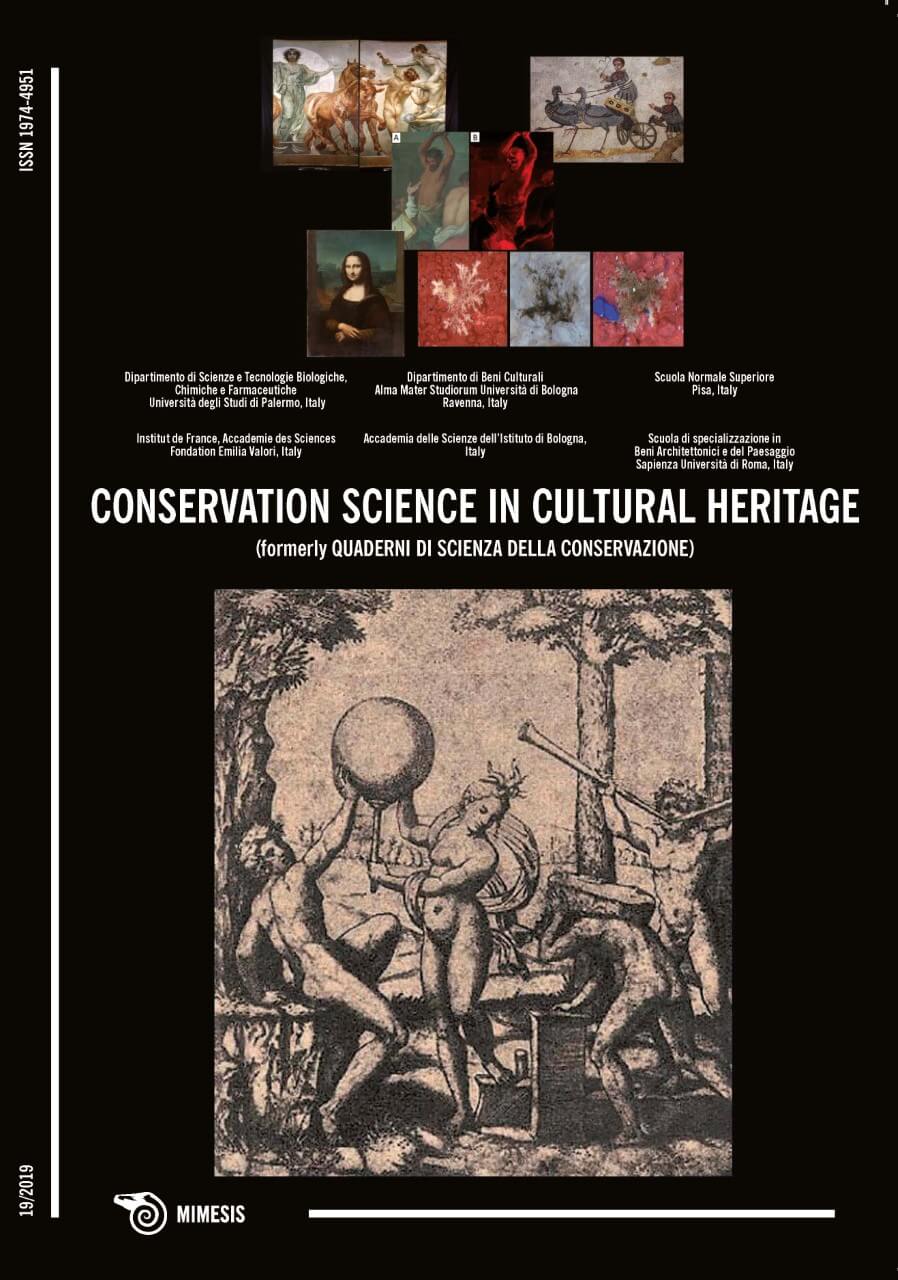Green Bioactive Compounds: Mitigation Strategies for Cultural Heritage
DOI:
https://doi.org/10.6092/issn.1973-9494/10347Keywords:
biodegradation, Bacillus sp., Pouteria ramiflora, antifungal activityAbstract
Damage to buildings and monuments by microbiological growth is a cause of serious concern. Due to the necessity of treatment being assessed for in situ application, it is important to select a safe and effective strategy approach that safeguards both the environment and human beings. In the past decade the most frequently used and effective biocides have been banned due to their environmental and health hazards. This paper reports the development of remediation actions based on environmentally innocuous alternatives derived from active compounds produced by Bacillus sp. in conjugation with natural plant products from Brazilian Cerrado plant extracts.Downloads
Published
2020-03-18
How to Cite
Silva, M., Rosado, T., Lopes da Silva, Z., Nóbrega, Y., Silveira, D., Candeias, A., & Caldeira, A. T. (2019). Green Bioactive Compounds: Mitigation Strategies for Cultural Heritage. Conservation Science in Cultural Heritage, 19(1), 133–142. https://doi.org/10.6092/issn.1973-9494/10347
Issue
Section
Articles
License
Copyright (c) 2019 Mara Silva, Tânia Rosado, Zita Lopes da Silva, Yanna Nóbrega, Dâmaris Silveira, António Candeias, Ana Teresa Caldeira
Copyrights and publishing rights of all the texts on this journal belong to the respective authors without restrictions. Authors grant the journal right of first publication.
This journal is licensed under a Creative Commons Attribution 4.0 International License (full legal code).
See also our Open Access Policy.






